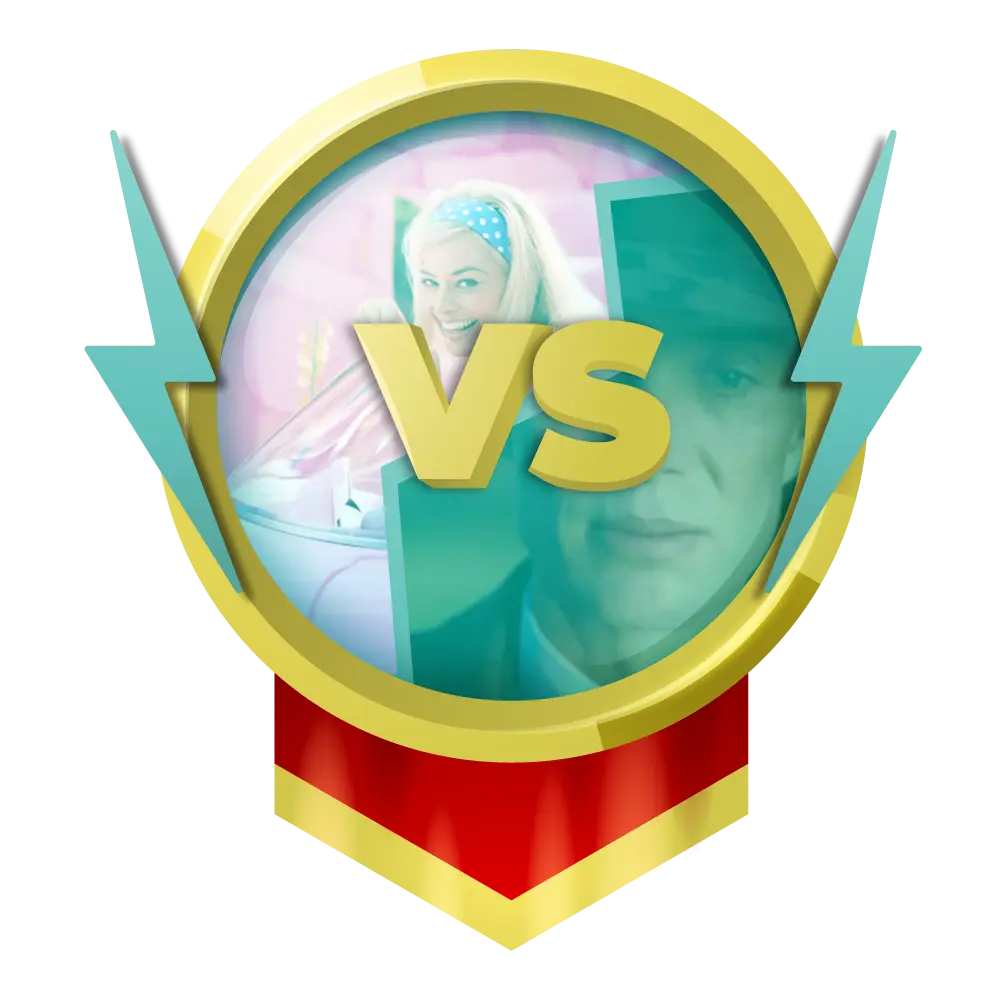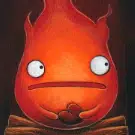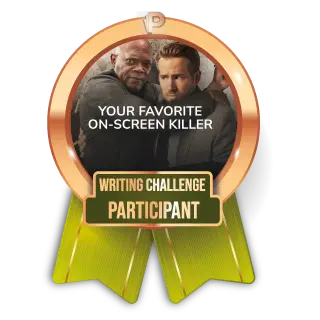 Hello Peliplaters!
Hello Peliplaters!
Last week, I read other users' reviews describing "28 Years Later" as "poetic." Honestly, when I first watched it, I didn't find it particularly scary, so I planned to write my review from this poetic perspective as well. However, as I was writing, I began to feel a subtle sense of unease. Director Danny Boyle's thinking in this film was far more complex than I initially understood.
The "28" trilogy tells the story of an acute infectious disease caused by a rage virus that swept across Europe. The virus was transmitted through bodily fluids and only infected humans. Infected people rapidly lost their sanity and developed indiscriminate hostility toward all other humans. They attacked normal people like zombies, but unlike ordinary zombies, they moved very quickly and could starve to death. From certain details throughout the film series, we could see that people infected with the rage virus still retained a sliver of consciousness, though their minds were completely dominated by hatred. Most of the time, they howled like beasts, and on rare occasions, they uttered brief phrases, such as: "I hate you."
The recently released "28 Years Later" is the third part of the trilogy. From the title, you can tell it's about the 28th year after the virus outbreak. Following the logic of typical plot development, since the first film "28 Days Later" showed all of Britain falling, you might expect that most of the world should have succumbed to the virus in the third film too. Perhaps because Boyle didn't want to create another World War Z, he deliberately chose not to go that route. In his setting for the third story, the rest of the world united to quarantine Britain. The groups of humans that survived within Britain formed semi-modern, semi-primitive villages that didn't communicate with one another and lacked any infrastructure to support internet access. Village residents used geographical advantages to prevent the infected from invading and employed primitive weapons such as bows and arrows to fight against them.
So what made "28 Years Later" outstanding? You'll discover that while Boyle has expanded considerably on the concepts of "the infected" and "survivors," he wasn't satisfied with simply creating a basic battle between humans and non-humans. Instead, he continuously questioned one particular concept: violence.
When the 12-year-old protagonist Spike and his father first left their village for the coming-of-age ritual of hunting the infected, Boyle played a stirring song as background music, occasionally interspersing images of medieval soldiers marching in unison and hacking at one another. This montage sequence built a feverish effect, naturally leading the audience to expect a thrilling battle. When Spike laboriously overcame his fear to kill a helpless, mildly infected individual who could only crawl on the ground, the stark contrast between his father's cheers and the shame on his face was striking. Was Spike's action violent? From a humanitarian perspective, it obviously wasn't. The infected, whether strong or weak, were enemies of humanity. However, judging from Spike's changing reactions, violence is absolutely a behavior that needs guidance— it isn't an innate human trait. If Spike hadn't been taught about hunting the infected, and without his father's instigation and encouragement, he likely wouldn't have done it.
After killing the mildly infected person, Spike and his father quickly encountered the powerful Alpha who was severely infected. Not only was he physically imposing, but he also possessed substantial intelligence. This time, they could only flee. They escaped to an abandoned house where an "infected" person hung upside down from the ceiling in one of the rooms. He had his head covered with a white plastic bag and occasionally emitted beast-like howls. After a brief observation, Spike's father ordered his son to kill him. This time, Spike was even more hesitant because he couldn't determine whether the person before him was truly infected without seeing his face. Spike's father recognized his child's reluctance but wasn't surprised by it, emphasizing: "The more you kill, the easier it gets." Spike continued to refuse his father's orders until the infected man broke free from the ropes, and only under his father's urgent commands did Spike finally release his arrow.
Just like in the previous scene, Spike's action was justifiable, but at the same time, we can't help but question: Is the concept of "enemy" socially constructed?
Boyle didn't stop his inquiry there. In a subsequent scene, Spike, his mother, and a soldier traveling with them encountered an infected pregnant woman. After a swift assessment, Spike's mother decided to help her deliver her baby—and she succeeded. The scene horrified me, just as it terrified the soldier. For a moment, my brain froze completely, similar to when I watched the human characters infected by aliens give birth to mutated humans in "Alien: Romulus"—I was utterly stunned. Fortunately, the baby turned out to be completely normal, neither mutated nor showing any signs of infection. While I wondered about this infant's fate, the frightened soldier shouted at Spike's mother to put the child down, insisting that all the infected had to die, including this newborn. He first shot the baby's mother, and as he prepared to shoot the infant next, the infected Alpha suddenly appeared and killed him.
In this scene, Boyle elevated his questioning of violence to a new level. The baby posed no threat, and although her future remained uncertain, she clearly had a high probability of becoming part of humanity. If infected people were humanity's absolute enemies, then this baby certainly wasn't—at least for now. In fact, she might have even offered hope for humanity to completely overcome the rage virus. So, was the soldier violent? To ordinary humans, he wasn't; he'd previously saved Spike and his mother. From his terrified expression and the indiscriminate quarantine restrictions countries imposed on Britain (where one could never leave upon landing on British soil), we could infer that he'd received strict education about the infected—that all the infected had to be executed immediately regardless of the circumstances.
These scenes were difficult to fully comprehend at first glance for viewers accustomed to zombie films. The zombie film boom of the 2010s created a fixed mindset about the genre: humans either kill zombies or get killed by zombies. In this mindset, zombies weren't truly alive, but rather purely entities approximating life. They possessed human shells without human souls. Though "The Last of Us" series enriched the alien infection mechanics, it still didn't truly treat the infected as a variant species, ultimately following a narrative path similar to "The Walking Dead" by focusing on human psychology in an apocalyptic setting. In these stories, humans eliminated zombies without psychological burden—just as they would weeds or viruses—and resultantly experienced a cathartic satisfaction similar to playing a lawn-mowing game. Though viewers occasionally questioned the plausibility of zombies, the truth rarely mattered.
Through Boyle's lens, however, the infected weren't zombies but an alternate species in the truest sense. This species resembled humans yet they were far less advanced. This subtle difference gave rise to many new questions. Many wildlife animals are less advanced than humans, but they're capable of threatening us. Yet humans don't necessarily slaughter all of them because modern science has taught us the importance of ecosystems. If humans actively eliminated the infected because they posed a threat, then the scenes with the mildly infected person and the baby refute this motivation. If humans did it because the infected were useless to humanity, then the infected carriers who were immune to the virus in the second film "28 Weeks Later" deserve further consideration. Additionally, why did the infected hate uninfected humans but not their own kind? This too is worth pondering.
Similar to the hypothesis that late Homo sapiens exterminated Neanderthals, the infected likely viewed normal humans as similar yet not entirely equal competitors. Under the stimulus of the rage virus, they, having mutated, firmly believed their conflict with normal humans was irreconcilable—and that they had to eliminate all normal humans to become the sole species possessing humanoid advantages. This bears some resemblance to Nazi ideology, doesn't it?
I felt a sense of dread because Boyle's "zombies" could easily be substituted with "the other." In the third film, Boyle portrayed a doctor who appeared deranged but was actually mentally sound. He regularly cremated both infected and uninfected corpses alike, then sifted through the ashes to extract skulls, which he stacked into a small mountain. He did this for only one reason: remembrance for the dead. Before Spike was born, his father encountered this doctor during an excursion while he was cremating bodies. That sight terrified Spike's father so much that he regarded the doctor as a monster for many years afterward. Only when Spike himself interacted with the doctor was the misunderstanding cleared up.
To what extent can humans tolerate the other? This question is difficult to answer and perhaps doesn't require a direct response. In Boyle's view, observing and understanding the other precedes tolerating them. If humans lack even the patience to observe and understand, then tolerance becomes impossible. Everyone should exercise greater patience before deciding to reject dissimilar entities—after all, no one knows when they might become as helpless as the orphaned baby or the doctor who dealt with dead bodies day in day out.





























































View replies 2